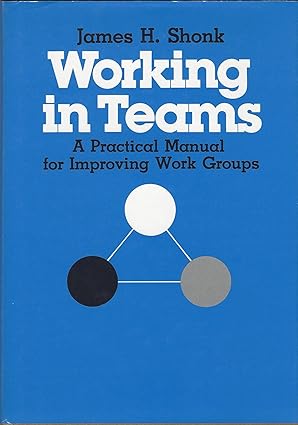James Shonk advises that you should start your efforts toward debugging teams and meetings starts with and analysis of the goals and roles of each member or participant.
Debugging Teams and Meeting Starts With Goals and Roles
 Startups have fewer meetings than larger companies but entrepreneurs still need to make those meetings effective, in fact there is less margin for unproductive meetings in a startup than there is in a larger firm. Here are two sources of good information on effective teams and how they meet:
Startups have fewer meetings than larger companies but entrepreneurs still need to make those meetings effective, in fact there is less margin for unproductive meetings in a startup than there is in a larger firm. Here are two sources of good information on effective teams and how they meet:
- James Shonk’s “Working in Teams” is a great place to start (and available used for a penny plus shipping on Amazon).
- Michael Lopp’s “Rands in Repose” blog category devoted to management is also useful, in particular his post “How to Run a Meeting“
Shonk offers a great model for effective teamwork:
- Goals: what are we here to accomplish?
- Roles: who is going to play each position on the team?
- Process: how are we going to work together, what are the rules for interacting?
- Relationship: how do we feel about each other?
While poor morale or interpersonal conflict can often be a harbinger for deeper problems, it’s much more effective to make sure that everyone is clear on the answers to the following two questions before analyzing particular processes or interactions:
- Are the goals for the team/group clear and agreed to?
- Are the roles that each attendee will play in contributing to them clear and agreed to?
One key metric for a team is interdependence: if you don’t need a member of the team to accomplish the key goals, shrink the size of the meeting and see if that improves focus and traction.
Lopp offers another perspective on meetings in a product development environment that complements Shonk. He suggests that every successful meeting needs:
- an agenda
- a referee to keep the team making progress.
We take part in a number of working meetings with founders where it can sometimes seem that more heat than light is shed on a topic. Most of the founders we work with are engineers or scientists and they typically chose those careers because their underlying personalities are more comfortable interacting with things and ideas than people. There can be a temptation to try a new technology or software tool to address meetings that have become dysfunctional
A better place to start is to make sure that the goals are both energizing and challenging for your team. And that each member has a key role to play. That being said we have found that using a wiki page for a common agenda and minutes/action-items works much better than e-mail for teams up to a dozen or so and creating a parallel chat session if you are on a conference call allows members to add quick comments, suggest related URLS, raise their hand to speak, and capture shared notes contemporaneously (which not only adds value but demonstrate that they are actively listening).
Related Blog Posts
- Guidelines for Effective Teamwork in Remote Teams
- Lessons From Working With Teams Who Speak English as a Second Language
- Faith Emittee on “Working Capital: Assembling Your Team”
- Team Building: Rapid Ramp
- Chalk Talk: Where is your team in the explore exploit continuum?
- How to Tell When Your Team Has a Workable Plan of Action
- Slides and Audio From “Leading A Team of Experts” at PMI-SV Sep-17-12
- Newsletter: Collaborating to Build Better Companies & Teams

Pingback: SKMurphy, Inc. Write Down Key Commitments & Questions To Answer